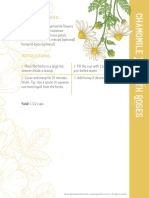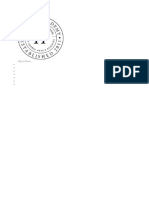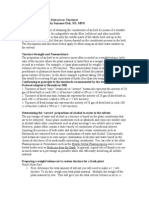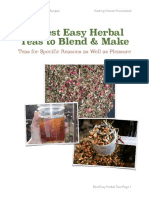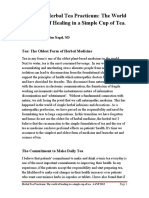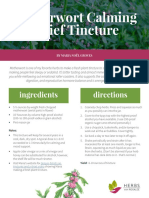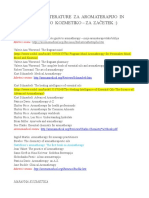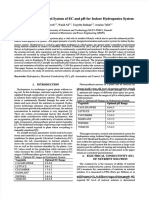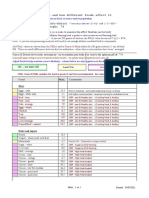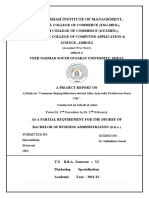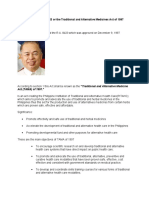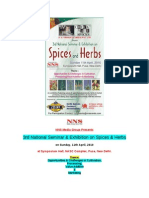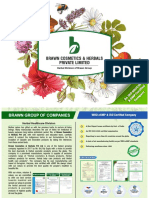HealingHarvestHomestead.
com 1 of 5
How to Make a Tincture & Plant
Material Proportions Cheat Sheet
Making your own herbal tinctures is a great way to support your health
and wellness and be less reliant on our “sick” medical industry.
Herbs support the body in so many different ways. In fact, since I’ve
learned to make tinctures over the past several years, I just don’t need to
use Rx or OTC (over the counter) medications ever, anymore. My herbs
take care of everything for Mr. V. And me!
From pain relief, relaxation, helping with sleep, menopause issues, male
support, heart health, and SO much more, herbs have become our main
source of aid. Tinctures and extracts play a big part in our choices too.
So, here is how to make an herbal tincture:
Step 1) Add your herbs to your jar.
**See the Cheat Sheet below with basic proportions of plant to solvent.
Step 2) Fill your jar with the solvent of choice.
Step 3) Shake well, and allow to sit for about an hour.
Step 4) Add more alcohol (or other solvent) as needed.
**This will depend on how much alcohol the plant material absorbs. You
want your solvent to completely cover the plant matter, and be within an
inch or so of the top of the jar for movement.
Step 5) Find a great spot to keep your processing tincture. This can be in
a sunny window (the solar method); a dark, cool closet (which some
herbalists prefer), or simply a shelf in your kitchen or on the counter.
�HealingHarvestHomestead.com 2 of 5
Shake your tincture a few times a week, especially if you are using
powdered herbs.
Step 6) Allow your herbs to macerate (steep) in the liquid for four to eight
weeks.
**I have left mine for a year before, and it’s still been just fine. However,
your tincture should be ready within the six week range, certainly.
Step 7) Strain out the herbal matter.
**To do this, I use a strainer and a layer or two of cheesecloth or paper
towel. This ensures a nice clear tincture.
Step 8) Bottle up your tincture!
**I use amber glass bottles because the amber glass helps keep light from
the liquid and protects it from degradation.
Enjoy!
Your tincture will last at least a year, and I have used tinctures that are five
years old with absolutely no issues. I’ve heard of other herbalists using
tinctures that are even older. They are very shelf-stable!
�HealingHarvestHomestead.com 3 of 5
Now here is the Plant Material Cheat Sheet!
Different herbs act differently in a tincture. Fresh and dried. The part of the
plant used. These are some of the factors that you need to take into
consideration when you create your tinctures!
One of the reasons proportions are important in creating a tincture is that if
you add too little, your tincture will be weak and ineffective. If you add too
much herb, your solvent won’t be able to extract all the chemical
compounds in the plants either.
So here are some simple guidelines:
Using Fresh Herbs (Leaves & Flowers):
There is some debate over using fresh vs. dried herbs. I personally prefer
dried herbs. However, there are a few herbs that I enjoy using fresh. But I
do allow them to wilt over a period of two or three days in order to reduce
the moisture in the plant first.
• Add wilted fresh herbs to a glass jar until 2/3 to 3/4 full.
• Pour your menstruum of choice over the top (I like alcohol myself, as you
can read about in this article.)
• Shake well, and be sure all the plant matter is submerged. The herbs
should be able to move somewhat freely in the liquid.
Using Dried Herbs (Leaves & Flowers):
You won’t use as much dried herb as fresh because the dried herbs will
reconstitute in the liquid and expand.
• Add dried leaves & flowers to a glass jar until 1/2 to 3/4 full.
• Pour your alcohol (or other solvent) over the top of the herbs and fill the
jar.
• Shake well. Check the jar after about an hour to see if you need to add
more alcohol/solvent.
�HealingHarvestHomestead.com 4 of 5
Using Fresh Herbs (Roots, Barks, Seeds, & Berries):
• Chop up the herbs to increase exposure to the solvent.
• Add herbal matter to about 1/2 full in the jar.
• Pour your alcohol over and fill the jar.
• Shake well. Allow to sit.
Using Dried Herbs (Roots, Barks, Seeds, & Berries):
• Fill your jar about 1/3 full of herbs, cut into small pieces or crushed.
• Pour your alcohol over the herbal material until the jar is full.
• Shake well. Add more alcohol if you need to—-it may take a couple of
days for the herbs to soak up the solvent.
• Allow to macerate for the recommended time period.
NOTE: Hard herbal parts may actually double in size as they reconstitute,
so this is why you don’t add nearly as much herb to your jar when using
dried hard herbs.
Those are the basic guidelines for using plants in a solvent in order to
create an extract! :-)
If you have questions, please feel free to email me at
heidivillegas@healingharvesthomestead.com
And here are some favorite resources to help:
Where I buy my herbs: 4
Starwest Botanicals
I love this company! I’ve been purchasing from them for many years now,
and have never once had a negative experience.
Herbal schools I recommend:
The Herbal Academy of New England
�HealingHarvestHomestead.com 5 of 5
They have many courses, both short and long, for the aspiring herbalist at
all levels. I guarantee there is something there for you if you are interested
in an herbal path.
For supplies:
These are things like strainers, bottles, jars, etc., I purchase from Amazon.
And here are some other articles you may want to take a look at:
How to Make a Soothing Sleep Tincture
How to Make an Allergy Support Tincture
How to Start Using Herbs Series, Part One
And there are lots more over at Healing Harvest Homestead, so go take a
look!
Disclaimers and Disclosures:
You can read my complete Privacy Policy, Disclaimers, & Disclosures here.
In the meantime:
I am NOT a medical doctor. In no manner, stated or implied is any
statement made here, on the blog, or in any other publication or media
meant to treat, cure, prevent, or diagnose any illness or disease. I simply
share my own opinion based on experience and study. Please be sure to
seek advice from your medical professional before using herbs or essential
oils. These statements have not been evaluated by the FDA.
FTC Disclosure: There may be affiliate links in this publication. If you
happen to click through and make any kind of purchase, I may earn a
small commission at no extra cost to you.









